
The genus Orestes combines relatively small and elongated Phasmatodea species from Southeast and East Asia.
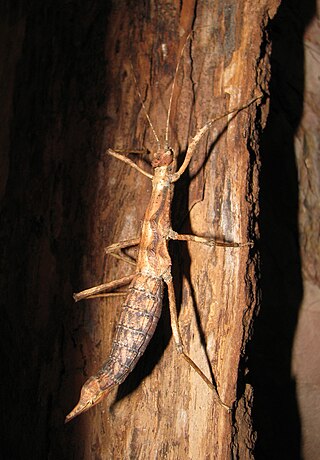
Sungaya inexpectata is a species of stick insects and the type species of genus Sungaya. The species name is derived from the Latin as "inexpectatus" and means "unexpected". Its common name is sunny stick insect, derived from the less commonly used sungay stick insect, which in turn refers to the place where the species was found.

Datamini is the only tribe within the subfamily of the Dataminae from the order of the Phasmatodea. The representatives of this subfamily are on average not as large as those of the other two subfamilies belonging to the family of Heteropterygidae.

The genus Planispectrum combines very small and compact species from Southeast Asia.
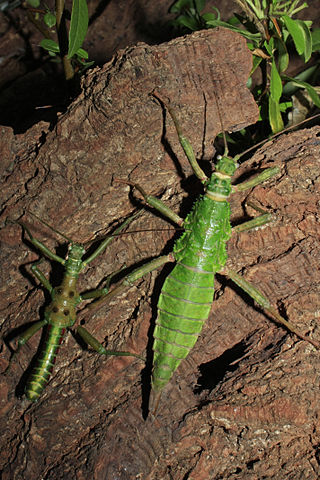
Mearnsiana bullosa, occasionally referred to by the common name Manobos stick-insect,is a species of stick insect in the family Heteropterygidae. It is native to the Philippine islands of Mindanao and Leyte. Until 2023 it was the only described representative of the genus Mearnsiana.

Theramenes is a genus of medium-sized stick insects in the tribe Obrimini, which is native to the Philippines and to the Indonesian Talaud Islands.

Aretaon asperrimus is a species of insect in the Aretaon genus of the Phasmatodea order. The sometimes used common name thorny stick insect is a bit misleading, since the species does not correspond to the typical stick-like habitus and many other species are thorny as well.

Orestes mouhotii is an insect species belonging to the order of Phasmatodea. Because of its synyonym Orestes verruculatus, it is the type species of the genus Orestes. Because of its compact body shape, the species is sometimes referred to as small cigar stick insect.

Orestes guangxiensis is a representative of the genus Orestes.

Orestes japonicus, a stick insect, is a representative of the genus Orestes.

Orestes subcylindricus is a species of stick insects native to Vietnam.
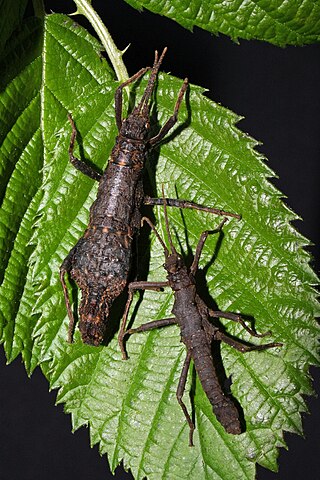
Dares murudensis is a relatively small species of stick insect. Like most other members of the genus Dares, the species is native to Borneo.

Trachyaretaon carmelae is a species of stick insects. It is one of the largest in the subfamily Obriminae.
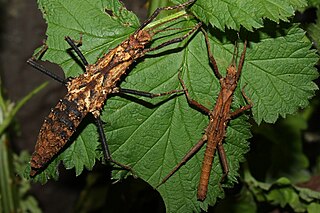
Tisamenus serratorius is a stick insect species that occurs on the Philippine island Luzon.

Tisamenus deplanatus is a stick insect species native to the Philippine islands Luzon and Mindanao occurs.
Hainanphasma is a genus of medium-sized, slender Phasmatodea species native to the Chinese island Hainan.
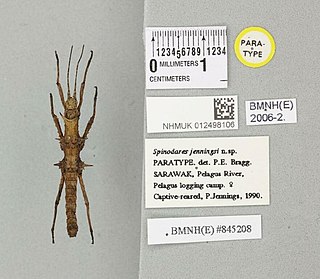
Spinodares is a monotypic stick insect genus endemic to Borneo, containing Spinodares jenningsi as the only valid species.

Trachyaretaon echinatus is the type species of the genus Trachyaretaon in the order of the stick insects.

Tisamenus armadillo is a stick insect species (Phasmatodea) in the family Heteropterygidae, endemic to the Philippines.

Eubulides timog is a stick insect species from the family of the Heteropterygidae. Although only described in 2023, this species, native to the south and east of the Philippine island Luzón, has been kept and bred in the terrariums of enthusiasts since 2009.




















